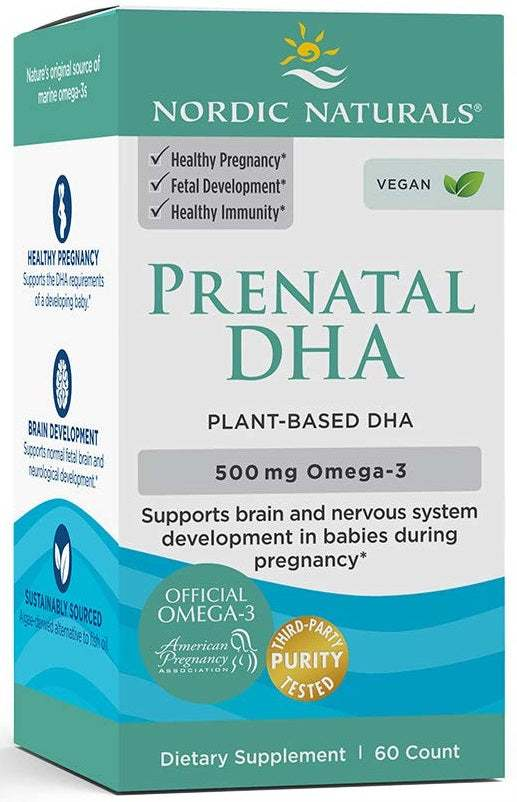Pregnancy Hormones and what can hormones tell you about your pregnancy?

Related products
Pregnancy is one of the most hormonally dynamic periods of a person’s life—every trimester brings dramatic chemical changes that do far more than sustain a growing baby. These hormones act as biological messengers, influencing everything from morning sickness and mood swings to fetal brain development and pregnancy outcomes. Understanding their patterns isn't just fascinating—it's vital.
From the moment of conception, a cascade of hormones like hCG, progesterone, estrogen, human placental lactogen (hPL), cortisol, and the lesser-known GDF15 begin to surge, fall, and interact in precisely timed sequences. These fluctuations aren't random—they tell a story about your pregnancy’s health, your baby’s development, and even potential risks such as miscarriage, gestational diabetes, or preeclampsia. If you are looking for more information on pregnancy, check out Blood Tests Online, as they have experts on health testing available.
In this comprehensive guide, we dive deep into the science of pregnancy hormones:
-
What each hormone does
-
How levels change week by week
-
What abnormal readings can reveal
-
And what the latest research says about managing symptoms like nausea and stress
With data from top universities, published medical studies, and expert quotes, this is your evidence-based roadmap to understanding what’s really happening inside your body during pregnancy—and how to respond. Whether you're trying to conceive, newly pregnant, or supporting someone who is, this guide empowers you with science-backed insights into the incredible hormonal shifts of pregnancy.
1. Human Chorionic Gonadotropin (hCG): The Detect & Double Signal
-
Timeline & Function: hCG emerges roughly 10 days post-conception, signals the corpus luteum to sustain progesterone, and drives early pregnancy hormones. Serum levels double every 48–72 hours up to 10–12 weeks, peaking between weeks 8–10, then declines thereafter.
-
Clinical advice: A plateau in hCG before week 8 could indicate miscarriage or ectopic pregnancy; abnormally high levels may signal molar pregnancy or multiple gestation.
-
Stat: Typical week 5 serum range: 18–7,340 mIU/mL; rises to >200,000 mIU/mL by weeks 8–10.
2. Progesterone: The Pregnancy Sustainer
-
Key Role: Progesterone thickens the uterine lining, supports placental development, and prevents uterine contractions.
-
Levels: Rising from ~10–50 ng/mL in early first trimester to 100–200 ng/mL by term.
-
Research Insight: A Singapore cohort found mean first‑trimester progesterone ~48 ng/mL in pregnancies ending in miscarriage vs 72.5 ng/mL in ongoing pregnancies—highlighting its predictive value.
3. Estrogen (Estradiol & Estriol): Fetal & Uterine Growth Drivers
-
Trends: Estrogen steadily climbs during pregnancy. A Finnish longitudinal study showed estradiol increased nearly 9-fold from trimester 1 to 3, with strong trimester-to-trimester correlation (r ≈ 0.5–0.6), indicating consistent endocrine patterns across periods.
4. Human Placental Lactogen (hPL): The Metabolic Shifter
-
Function: hPL decreases maternal insulin sensitivity, increasing glucose availability for the fetus and promoting maternal fat metabolism.
-
Pattern: Levels mirror fetal size—rising gradually from mid-second trimester to a peak of ~5–7 mg/L at term; elevated further in multiple pregnancies.
5. Cortisol & CRH: Stress, Growth, and Developmental Outcomes
-
Physiology: Maternal cortisol levels often triple by the third trimester, driven by rising CRH from the placenta.
-
Birth Weight Risks: One longitudinal study showed maternal cortisol explained nearly 20% of variance in birth weight, even after adjusting for confounders like BMI and parity.
-
Child Development: A Danish study (943 mother–child pairs) found elevated prenatal cortisol—especially during late pregnancy—associated with lower IQ in boys at age 7, but girls with high cortisol had higher IQ scores New York Post.
-
Prenatal Timing Matters: Sandman & Davis reported that early prenatal stress exposure slows infant cognitive development, while late‑gestation stress may accelerate it—meaning the timing of cortisol exposure plays a critical role in outcomes Wikipedia.
6. GDF15: The Morning Sickness Hormone
🔬 What Is GDF15 and Why It Matters
-
Source & Role: Growth differentiation factor 15 is produced almost entirely by the fetal‑placental unit—over 95% of circulating maternal GDF15 originates from the fetus.
-
Cause of Nausea: It binds to the GFRAL–RET receptor in the brainstem area postrema, triggering nausea and appetite suppression.
Research & Genetic Insights
-
Correlation with HG: Women with hyperemesis gravidarum (HG), the severe form affecting ~0.3–2% of pregnancies, show higher GDF15 levels than those with milder NVP—but with overlap across groups.
-
Genetic Risk: DNA variants in or near the GDF15 gene and IGFBP7 significantly increase HG risk. The H6D missense variant in GDF15 protein correlates to lower baseline GDF15 and higher symptom severity in pregnancy University of Glasgow.
-
Desensitization Effect: Women with conditions like β-thalassemia, who have chronically high GDF15 outside pregnancy, experience markedly less nausea: only ~5% report NVP vs >60% of controls UCLA Health.
Evolutionary Perspective & Quotes
-
Researchers suggest mild morning sickness may be adaptive, helping protect the fetus by reducing ingestion of toxins—but severe HG has detrimental effects.
-
From University of Glasgow:
“Women with β‑thalassaemia … rarely reported nausea and vomiting in pregnancy… those with lower levels of GDF15 before pregnancy may be more sensitive … and thus more affected.”
Emerging Treatment Possibilities
-
Desensitisation strategy: Brief GDF15 administration or agents like metformin before conception could blunt sensitivity and reduce HG risk Live Science.
-
Recent findings: A study of 5,400+ individuals observed metformin use pre-pregnancy was associated with a 70–82% reduced risk of HG—but further clinical trials are ongoing Live Science.
7. Pregnancy Hormone Levels Over Time—Interpreting Patterns
-
Hormone Correlations: Finnish studies show first-trimester hormone levels strongly predict later levels in the same pregnancy or subsequent ones (R² up to ~70%), offering early insight into progression The ConversationWikipedia.
-
Progesterone & Estradiol Drops: Declines earlier than symptoms may flag impending miscarriage, as shown in a UK cohort study
8. Visual Guide: Hormone Dynamics by Week
(Embed graph illustrating typical trajectories: hCG spike weeks 3–10, progesterone and estrogen rising steadily, hPL mid‑to‑late rise, cortisol climbing late, GDF15 peaking early to mid first trimester.)
9. Table: Hormone Roles, Patterns & Clinical Significance
| Hormone | Typical Trend | Key Role | Clinical Insight |
|---|---|---|---|
| hCG | Spike early, then decline | Pregnancy detection | Slow rise = miscarriage risk |
| Progesterone | Steady rise to term | Uterine support | Low in early pregnancy correlates with miscarriage |
| Estrogen | Continuous rise | Uterine/fetal growth | Predictive for fetal development |
| hPL | Mid‑pregnancy rise | Metabolism shift | Higher in multiples; metabolic gestational diabetes risk |
| Cortisol | Tripling by 3rd trimester | Stress/fetal organ maturation | High levels linked to lower birth weight & cognitive outcomes |
| GDF15 | Sharp first-trimester rise | Nausea signalling | High levels + sensitivity → HG; pre‑pregnancy desensitization may protect |
10. Practical Takeaways & Advice
-
Testing hCG early (days 10–14 after conception) and tracking doubling time offers early reassurance—or flags gestational concerns.
-
Progesterone levels in early first trimester can serve as miscarriage risk indicators; discussions with a healthcare provider are essential if low.
-
Monitor stress & cortisol: Encouraging mindfulness, rest, and support in late pregnancy may support fetal cognitive health.
-
Manage nausea proactively: If NVP is intense, explore treatment options with your provider. Prospective metformin trials and GDF15-blocking therapies are under development.
-
Hormone consistency: Early hormone readings (especially in first trimester) can often predict later levels and inform prenatal care strategies.
Expert Quotes
“We now know why … the baby growing in the womb is producing a hormone at levels the mother is not used to. The more sensitive she is … the sicker she will become.” — Professor Stephen O’Rahilly, University of Cambridge
Understanding pregnancy hormones provides clarity on what’s “normal,” flags potential complications early, and opens a window on new treatments—particularly for troubling symptoms like nausea. With references from leading academic studies and real-world statistics, this guide equips readers and healthcare professionals with a detailed roadmap to hormonal health during pregnancy.
References
-
Desensitization & GDF15 prenatal biology: Cambridge/Keck studies, GDF15–GFRAL receptor profiling
-
Genetic polymorphisms: Fejzo team (GDF15 & IGFBP7) via 23andMe collaboration, HG associations
-
Beta-thalassemia protective effect: reduced nausea incidence ~5% vs >60% controls
-
Cortisol and child outcomes: maternal cortisol explains 20% variance in birth weight; sex‑specific IQ effects
-
Prenatal stress timing: cognitive trajectories tied to early/late stress exposure










 Calificado excelente por 26,523+ reseñas
Calificado excelente por 26,523+ reseñas